#liberté égalité fraternité is france's national motto
Text

Christen Press Is Determined to Reimagine the Way Female Athletes Are Seen
For two-time World Cup winner Christen Press, who made her debut in the U.S. Women’s National Team in 2013, it’s no surprise that women’s sports have been having their moment—both before and throughout these Paris Summer Olympics.
Press, along with her teammate and partner Tobin Heath, have bet big on the public’s love of women’s sports. The duo launched their podcast, The Re-Cap Show, during the 2023 Women’s World Cup—the highest attended in history. It wasn’t their first foray into entrepreneurship in the women’s sports space; they are co-CEOs of Re-Inc, a global community for sports fans and changemakers, which launched ahead of the 2019 World Cup. The Re-Cap Show has amassed a dedicated online fan base, with video clips circulated among Re-Inc's 49,000 YouTube subscribers and 123,000-strong Instagram following.
On The Re-Cap Show, the duo bring fans behind the scenes of professional women’s soccer, both at the international level and in the National Women’s Soccer League (NWSL). They debrief games with high-profile guests such as defender Ali Krieger, previous national team head coach Jill Ellis, current national team captain at the Olympics Lindsey Horan, and Angel City FC co-founder Kara Nortman. Press and Heath also break down and share their own perspectives on buzzy topics like scandals in the NWSL, what it’s like to date your teammate, and the recent cheating saga with the Canadian team.
Press and Heath launched Season 3 of the podcast in June, just in time to document the national soccer team’s journey at the Paris Summer Olympics. For Press—who returned to the pitch for Angel City FC on Thursday for the first time in over two years, after four surgeries to repair her torn ACL—it's up to women’s media to meet this moment and capitalize on it.
TIME delved into the Olympics, The Re-Cap Show, and why this moment in women’s sports is so important during a video interview with Press.
TIME: The momentum for women’s sports right now is immense. Caitlin Clark and Angel Reese enjoyed record-breaking performances in the NCAA last year, and the WNBA opened their 2024 season with their highest attendance in 26 years. This is also the first Olympics with gender parity. How is all of this impacting the way you cover the Paris Olympics with The Re-Cap Show?
Press: You're spot-on that women's sports are having insane momentum right now. For us, all the attention has really increased our mission to reimagine the way women are seen and experienced in sports. We started our show during the World Cup because we’re women soccer players, and that's when we committed to turning on a spotlight [and] never turning it off.
But the Olympics is this huge opportunity to inspire and reveal what's already there: lots of leagues, athletes, and players that are doing their job all-year round, but they get to be at the highest stage this summer. From a business perspective, [it’s about] bringing those supporters, fans, and community members into the women's sports world, which is the most inclusive, diverse, and interesting community that uses sport as a vehicle for change.
Take us back to creating Re-Inc with your teammates Tobin Heath, Megan Rapinoe, and Meghan Klingenberg. How far have you all come since then?
We started Re-Inc in 2019 with a single T-shirt before we went to the World Cup and it said “Liberté, Égalité, Défendez.” It was a play on the French motto [“Liberté, Égalité, Fraternité”] as we had headed to France, so we switched the word “fraternity” to “defend” because as the U.S. Women's National Team, we were defending our title, but we were also defending the principles of liberty and equality.
But since then, it’s grown into a community. Watching women play sports is an act of revolution. Not so long ago, women were not allowed to play sports, and until recently, we were not paid to play sports or paid very well. And so I think as women's sports get heightened, it is just the living and breathing symbol of progress in society that women can rise and be stars on the court and on the field. With launching our media division, we saw how the coverage was failing to represent the lifestyle and culture of us, and it was just a copy and paste from the men's side. The broadcast and the commentary was so off-putting that it was spoiling the sport for us. No one knew how to talk about gal culture.
What kinds of commentary were you used to hearing while you were playing with the U.S. Women’s National Team?
Sometimes, when I'm watching people commentate, I feel like they’re a kindergarten teacher explaining the basics of soccer with the assumption that the person who's watching has no idea what they’re watching.
I think there's a lot that needs to be improved. Also, when it comes to addressing social issues and the institutional prejudice that happens within sports, especially how we talk about Black athletes… The media should make sure you're seeing this vision of a woman athlete in a way that can be a badass—not self-conscious, but laughing loud and really proud of her success. So I think all of those lifestyle and social issues are baked into the game.
And then obviously, as the game grows, we're going to have more expertise and fundamental knowledge and that will just make the broadcast so much better. Part of why the Olympics is so great is because you get the best—the best commentators, the best camera angles—and that's another reason why people will fall in love with all the sports, since it's not, you know, just an iPhone shot of the last 50 meters of a race.
Your former teammate Kelley O’Hara is working with Just Women's Sports. Megan Rapinoe and Sue Bird are bringing back their podcast, A Touch More, and your former teammate Sam Mewis is also hosting her own show, The Women’s Game. Why do you think this is the moment where so many female athletes are working in media?
I haven't heard of another market that people are talking about that is successful right now, other than AI and women's sports. I feel very proud to have started this business five years ago and kind of be positioned as ready for the moment as opposed to reacting to the moment. As athletes, we're all inspiring each other and the businesses that are cropping up are inspired by a desire for all of us to raise the game and continue to have an impact. I'm very proud to be about it, to be a part of it, and to be alongside pioneering women. I think the competition is healthy, and it's necessary. It pushes us and I love that.
Many people view women’s sports as a sacred, safe space—something you talk a lot about on your podcast. Is there any fear that as the women’s game becomes more popular and more fans join, that other energies will enter into the space?
I always say the air gets thinner at the top. I think women's sports is a very diverse, inclusive space. And I actually know that members of the community feel very protective of the space. We have our membership community and our members often speak about protecting the space. There will always be challenges as it gets more mainstream.
That’s why I love doing our show: every week, we're talking about the challenges. We’re talking about how the women's sports community feels about someone's bigoted comment or someone who misrepresented them. And it's a two-way dialogue. I think that's really essential to maintain the integrity.
I remember when the social media scandal with midfielder Korbin Albert—who’s currently on the Olympic roster—came out earlier this year. You and Tobin went straight into talking about it. I think a lot of fans were curious to hear from you about it.
It was hard to talk about that, because we were afraid of someone just clipping a tiny piece of the conversation and, like, missing all the nuance and kind of misconstruing our language, but we thought it was important enough to do it anyway. Nuance is something that's consistently missing from the echo chambers.
What are you hoping the Olympics brings to the world of women’s sports?
Kara Nortman, who is the co-founder of Angel City, always tells a story that she was at the 2015 Women’s World Cup, and was completely moved and inspired by us winning. Then, she came home to try to watch us play, and couldn’t find any games, and she couldn't find jerseys. That’s why she started a women's soccer team. I think that story is so beautiful, because it really emulates what's so special at the Olympics.
I think there's a huge opportunity to uplift sports—even the sports that aren't as popular as women's soccer—and for people to go home and become lifelong fans.
37 notes
·
View notes
Photo

French Revolution
The French Revolution (1789-1799) was a period of major societal and political upheaval in France. It witnessed the collapse of the monarchy, the establishment of the First French Republic, and culminated in the rise of Napoleon Bonaparte and the start of the Napoleonic era. The French Revolution is considered one of the defining events of Western history.
The Revolution of 1789, as it is sometimes called to distinguish it from later French revolutions, originated from deep-rooted problems that the government of King Louis XVI of France (r. 1774-1792) proved incapable of fixing; such problems were primarily related to France's financial troubles as well as the systemic social inequality embedded within the Ancien Régime. The Estates-General of 1789, summoned to address these issues, resulted in the formation of a National Constituent Assembly, a body of elected representatives from the three societal orders who swore never to disband until they had written a new constitution. Over the next decade, the revolutionaries attempted to dismantle the oppressive old society and build a new one based on the principles of the Age of Enlightenment exemplified in the motto: "Liberté, égalité, fraternité."
Continue reading...
34 notes
·
View notes
Text
After the oath, it was a touching spectacle to see all the soldier-citizens rush into each other's arms, promising each other liberté, égalité, fraternité.
Desmoulins being the first person to ever bring the three words together as a formula in number 35 of Révolutions de France et de Brabant. (July 1790)
They will carry on their chest these words engraved: THE FRENCH PEOPLE, and below: LIBERTÉ, ÉGALITÉ, FRATERNITÉ. The same words will be inscribed on their flags, which will bear the three colors of the nation.
Robespierre being the first person ever to use the three words as a motto in his speech on the organisation of the national guard (December 1790)
#france’s national motto was the invention of two childhood friends that killed each other…#which is actually pretty cynical when you think about it…#robespierre#maximilien robespierre#desmoulins#camille desmoulins
25 notes
·
View notes
Text
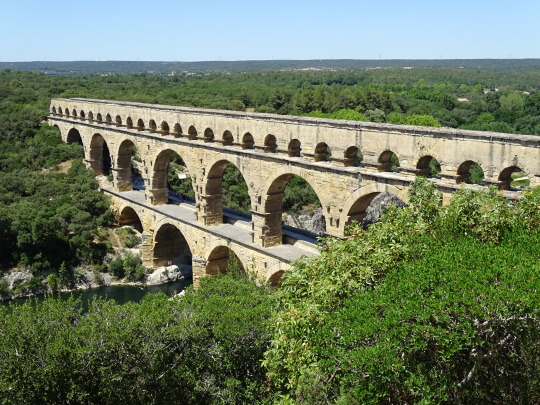


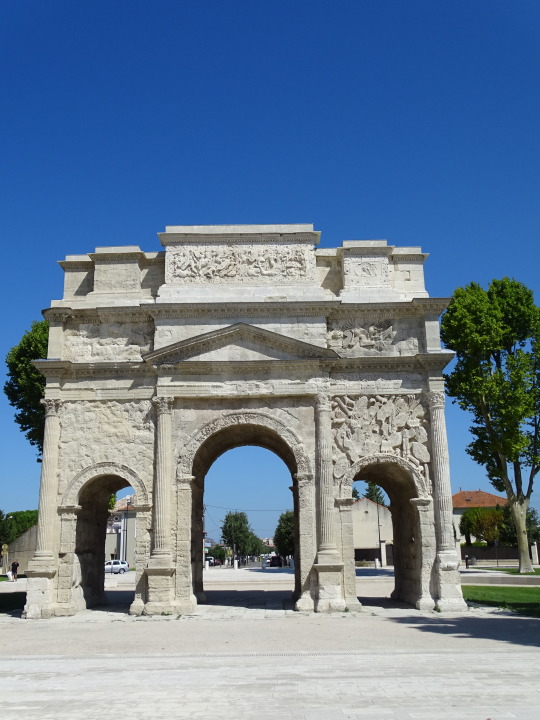
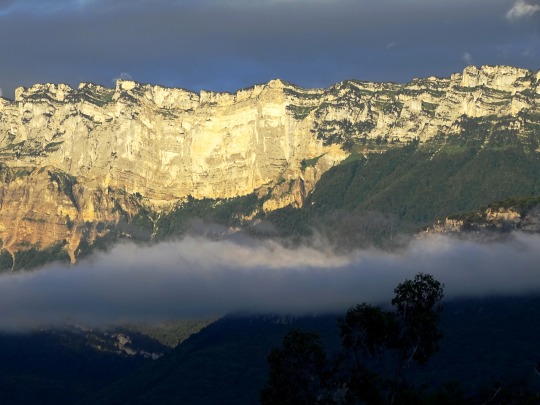
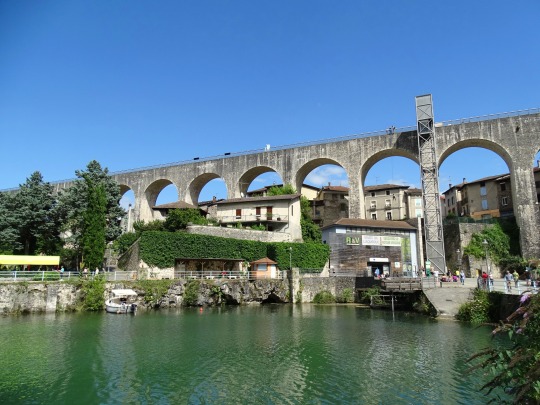
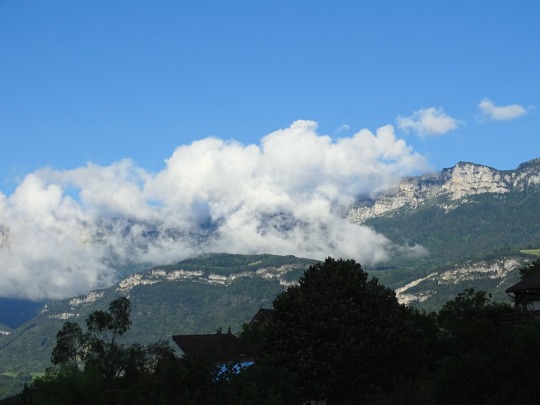
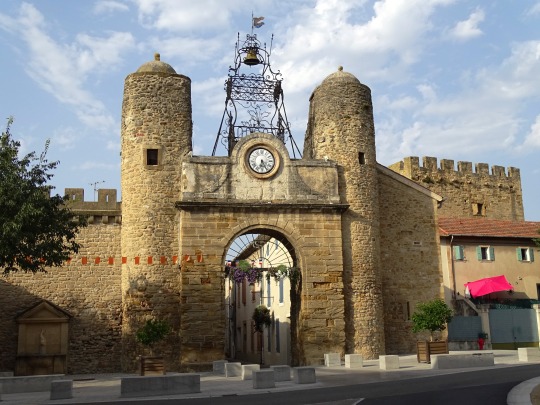
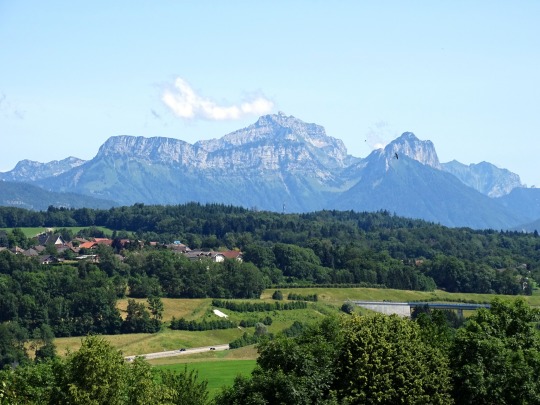

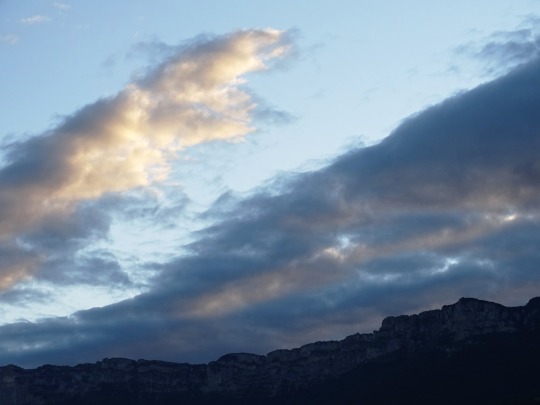

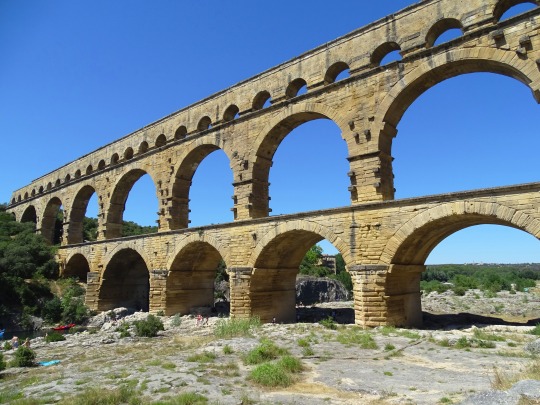

Fête de la Fédération
Fete de la Federation was a massive festival celebrated on July 14, honoring the French Revolution. The day was the predecessor of Bastille Day, as celebrated today. The point of the festival was to celebrate both the Revolution and the spirit of National Unity. At the time, the Revolution had overthrown the excesses of the French monarchy and replaced it with a constitutional monarchy, led by an elected National assembly. The Fete de la Federation was organized to coincide with the first anniversary of the storming of the Bastille. The festival came at a time when people believed that the revolution was over, though turmoil would follow in the coming years.
History of Fete de la Federation
The French Revolution began in 1789 with that year’s Estates-General. The abolition of the reigning ‘Ancien Régime’ or Old Regime began on July 14, 1789, when a crowd of protesters stormed the Bastille prison. By 1790, the monarchy had been overthrown and a National Assembly was elected. Believing the Revolution to be over, a desire to celebrate national unity spread across the French people. The festival in Paris was to be the most prominent celebration of fraternity — it was to be attended by the royal family, the deputies of the National Assembly, and the general public. The event was organized on the Champ de Mars, which was outside Paris at the time.
The festival began with a feast as early as 4:00 A.M., and it continued to proceed despite downpours throughout the day. A parade of ‘federes’ organized under 83 banners marched their way to the place the Bastille once stood, and the members of the National Assembly, along with Louis XVI, all took an oath to protect the new Nation. The festival was also attended by delegates from countries across the globe. A popular feast followed the official celebration.
Unbeknownst to all those who attended the festivities, the stability that they foresaw was not what they had in store for them. The following years in France were of political turmoil that culminated in the people becoming disillusioned with the monarchy, leading to the execution of the royal family in 1973. Even with the French Republic finally established, peace did not follow. June 1973 saw an uprising that overthrew much of the National Assembly, sparking the Reign of Terror in the nation. The following year saw 16,000 at the hands of the Jacobins. To deal with the oppressive threat of the former, a fragile French Directory was formed, which was soon overthrown by Napoleon Bonaparte, marking the end of France’s revolutionary period.
Fete de la Federation timeline
June 13, 1789 Estates General of 1789
The Third Estate forms the National Assembly.
July 14, 1789 Storming of the Bastille
Revolutionaries storm the Bastille prison.
July 14, 1790 Fete de la Federation
The Fete de la Federation is organized to celebrate the French Revolution.
January 1793 Monarch beheaded
Louis XVI is beheaded.
Fete de la Federation FAQs
What is July 14 in France?
It is celebrated as Bastille Day.
When was the French Revolution?
May 5, 1789, to November 9, 1799.
What is the name of the flag of France?
It is called the ‘Tricolore.’
How to Observe Fete de la Federation
Read about the French Revolution
Watch a documentary
Look up related philosophy
The French Revolution was a turning point in history. Spend the day reading about it.
If reading isn’t your thing, pop in a documentary about the Revolution! You’re bound to find something entertaining. You can even try a movie or two, like “Les Miserables” or “Marie Antoinette.”
The French Revolution was built on a foundation of ideas like equality, liberty, and justice. Learn more about these abstractions and what philosophers have said about them.
5 Interesting Facts About France
Tourism
National motto
Inventions
Highest European mountain
Most visited museum
France is the world’s most popular tourist destination.
The national motto of France is “Liberté, égalité, fraternité” or “liberty, equality, fraternity.”
The French invented the hot air balloon!
The tallest mountain in Europe, Mont Blanc, is in France.
The Louvre is the world’s most visited museum.
Why Fete de la Federation is Important
It’s an important part of French history
It’s a reminder of humanity
It’s an opportunity to learn about the French Revolution
The French Revolution formed the basis of the modern state of France. Fete de la Federation is an important part of it.
The French Revolution often entailed sequences of violent events. An earnest celebration of what people thought would be a peaceful regime reminds us of how human everyone in history was.
The Revolution is a major part of world history. The Fete de la Federation is a perfect excuse to learn more about it.
Source
#travel#original photography#vacation#tourist attraction#landmark#cityscape#architecture#landscape#14 July 1789#anniversary#French history#French National Celebration#France#summer 2021#Fête de la Fédération#Cruseilles#Saint-Nazaire-en-Royans#Isère#French Alps#Triumphal Arch of Orange#Fitou#Camaret-sur-Aigues#Pont du Gard#French National Day#Bastille Day
3 notes
·
View notes
Note
7, 20, 24!
thanks Mal!
7. three words from your native language that you like the most?
i'm the worst at picking favourites anything and tbh i don't really have favourite words? i'll be cringe and say liberté égalité and fraternité (liberty equality and fraternity, france's motto lol)
20. which sport is The Sport in tour country?
FOOTBALL (ligue 1 isn't that great compared to la ligua or premier league but 🤷♀️)


24. what other nation is joked about most often in your country?
belgian people 😭 + their accent, they also make fun of us
a lot of the jokes can't be translated but here's some from the top of my head
how do you put 12 belgian people in the trunk of a car? you throw a fry in it
why do belgian women have square nipples? to get babies used to eating fries
how do you make a belgian go crazy? you put them in a round room and tell them there's a fry in the corner
(there's a lot of jokes about fries....)
what's a skeleton in a closet? a belgian that won at hide and seek
a belgian guy visits london and gets on a double decker bus, he goes up the stairs and runs back down bc there's no driver upstairs
why are belgian buses 10 meters large and 2 meters long? because they all want to sit next to the driver
they have a lot of jokes about french people too
what's the difference between god and a french person? god doesn't think he's french
why do french people eat snails? because they don't like fast food
why do french people like belgian jokes? because they laugh three times: when you tell them, when you explain it to them, and when they understand it
too bad my dad is asleep bc he knows the best ones
2 notes
·
View notes
Text
La France : Quand la Mode, la Cuisine et l'Art se Rencontrent
Bonjour! Je m'appelle Asean Mae. Je suis étudiante en services de vol et je rêve de voyager à travers le monde un jour. Aujourd'hui, je vous invite à explorer et à parler de la belle et élégante France.
https://www.cntraveler.com/story/the-french-city-youll-fall-for

La France est un pays situé en Europe de l'Ouest. Sa superficie est de 551 695 kilomètres carrés et sa population est d'environ 67 millions d'habitants. La langue principale parlée en France est le français.
La France, un pays emblématique de l'Europe, est réputée pour sa riche histoire, sa culture diversifiée et sa cuisine délicieuse. De Paris, la ville de l'amour et des lumières, à la Côte d'Azur avec ses plages pittoresques, la France offre une variété de paysages à couper le souffle. Les majestueux châteaux de la Loire, les vignobles de Bordeaux et les villages médiévaux d'Alsace sont des trésors qui n'attendent qu'à être découverts.

Exploring the Beauty of France
La France: Faits intéressants sur la France
France is known as the foundation of haute couture, home to prominent fashion houses like Chanel, Dior, and Louis Vuitton. Paris Fashion Week is one of the most prestigious events in the fashion world.
The Louvre Museum is the world's largest art museum, covering 72,735 square meters and housing around 380,000 artifacts, including 35,000 works of art displayed in eight sections. It is home to Leonardo da Vinci's "Mona Lisa," protected in a climate-regulated, bulletproof glass case.

3. France is renowned for its superb gastronomy, which includes a diverse range of cheeses, wines, and pastries. French culinary techniques and foods, such as croissants, escargots, and coq au vin, are popular worldwide.
4. The French flag, known as the "Tricolore," consists of three vertical stripes in blue, white, and red.
5. The national motto of France is "Liberté, Égalité, Fraternité," which means "Liberty, Equality, Fraternity."
Things To do In France
Festivals: France's cultural agenda is enriched by lively festivals that honor art, music, and customs. One of the most renowned is the Cannes Film Festival, which occurs annually in May. This esteemed occasion not only presents the latest cinematic works of art but also draws in Hollywood celebrities and filmmakers from around the world, turning Cannes into a global center of elegance and film.
Another standout event is the Avignon Festival, held every summer in the historic city of Avignon. Recognized for its groundbreaking theater performances and artistic creativity, the Avignon Festival attracts theater aficionados and artists from various corners of the globe. The city's medieval alleys and ancient theaters create a charming setting for this celebration of ingenuity and cultural interchange.
In addition, France's festival landscape extends beyond Cannes and Avignon. Throughout the year, diverse regions host a plethora of cultural celebrations that exhibit the country's abundant heritage and artistic variety. From music festivals dedicated to jazz in Nice to traditional folk festivals in Brittany, there is something to suit every preference and interest.
These festivals not only entertain and motivate participants but also enrich France's cultural fabric, nurturing a sense of unity and pride in the nation's artistic accomplishments. Whether you are a movie enthusiast, a music aficionado, or simply intrigued by different cultures, France's festivals provide a distinctive chance to immerse yourself in a realm of creativity and festivity.

Skiing
France is unquestionably a skier's paradise, with world-class ski resorts tucked in the gorgeous French Alps. Les Trois Vallées, one of the world's most recognized ski destinations, has an enormous network of slopes that appeal to skiers of all skill levels, from beginners to specialists. The sheer expanse of this ski region, together with its modern facilities and breathtaking landscape, makes it a must-see for any skiing enthusiast. Chamonix, another gem in the French Alps, is known for its difficult terrain and the spectacular Mont Blanc background. This resort draws thrill-seekers and adrenaline addicts who want to test their boundaries on steep descents and off-piste experiences. The French Alps provide not only excellent skiing options but also a rich cultural experience. Visitors may immerse themselves in the lovely mountain communities, sample exquisite local cuisine, and learn about the region's unique blend of French and alpine traditions. Besides the ski slopes, the region has beautiful natural beauty, with snow-capped peaks, crystal-clear lakes, and lush woods providing a picturesque backdrop for outdoor activities. Aside from skiing, the French Alps offer a diverse selection of winter activities such as snowboarding, snowshoeing, ice climbing, and sledding. Whether you are an experienced winter sports enthusiast or a beginner looking to try something new, this snow-covered wonderland has everything for everyone. The region's varied terrain gives unlimited options for exploration and enjoyment, ensuring that anyone who comes.
History and Architecture
Exploring France's rich history through its stunning architecture and landmarks is like stepping back in time, leaving an unforgettable mark on every visitor. One of the top reasons to visit France is to experience its remarkable architectural heritage, spanning centuries and featuring diverse styles from Gothic cathedrals to medieval castles and ancient Roman ruins.
A must-see in France is the Palace of Versailles, a symbol of royal grandeur.
In Paris, the Notre Dame Cathedral showcases Gothic architecture at its finest. Its imposing façade, adorned with detailed sculptures and gargoyles, is awe-inspiring. Climbing to the top offers breathtaking views of the city, while inside, the stained glass windows create a magical atmosphere that speaks of spiritual devotion and artistic brilliance.
No visit to Paris is complete without a visit to the Louvre Museum, a treasure trove of art and history. Standing before the Mona Lisa by Leonardo da Vinci.
Heading south to Carcassonne, Designated as a UNESCO World Heritage site, Carcassonne's ramparts evoke tales of knights and battles, while its narrow streets reveal centuries of local life and resilience.
Further south, in Nîmes and Arles, ancient Roman ruins like amphitheaters and aqueducts tell the story of France's ancient past and the enduring legacy of Roman engineering and culture.
Exploring France's history and architecture is a journey of discovery and admiration. Each landmark tells a story of resilience, creativity, and cultural evolution, inspiring visitors worldwide to connect with its rich past.
Aesthetic Streets
France's enchanting streets, like Montmartre in Paris, exude unique character and charm with cobblestone lanes, bohemian spirit, and artistic legacy. Gordes in Provence offers honey-colored stone houses, narrow alleyways with flowers, and medieval architecture, evoking rural tranquility and Provençal charm.

French cuisine is renowned globally for its elegance, variety, and rich culinary legacy. Here are some fundamental elements that characterize French cuisine:
1. Regional Variety: The culinary landscape of France is diverse, and influenced by its different regions. Each region features its own specialties and traditional dishes that highlight local ingredients and cooking methods. For instance, Provence is recognized for its use of herbs and seafood, while Alsace is renowned for its hearty dishes like choucroute (sauerkraut with sausages and meats).
2. French cuisine emphasizes the use of fresh, seasonal ingredients. Whether it's seafood from the coasts or robust meats and cheeses from the countryside, French chefs prioritize quality and flavor in their creations.
3. The art of sauce making is a hallmark of French cuisine, with sauces often considered the highlight of a dish. Time-honored sauces like Béchamel, Hollandaise, and Velouté are the building blocks of many French recipes, enhancing the depth and richness of meats, seafood, and vegetables.
4.Signature Dishes: Iconic French dishes include Coq au Vin (chicken braised in red wine), Bouillabaisse (Provencal fish stew), Ratatouille (vegetable stew), Escargots (snails), and Crème Brûlée (custard dessert with caramelized sugar).
5. Bread and Pastries: Bread plays a significant role in French cuisine, with baguettes and croissants serving as emblematic symbols of French baking. Pastries like éclairs, macarons, and tarts demonstrate French expertise in patisserie, blending precision with creativity.
6. Wine and Cheese: France is globally acclaimed for its wines and cheeses, integral components of French gastronomy. Each region produces unique wines (such as Bordeaux, Burgundy, and Champagne) and cheeses (like Camembert, Roquefort, and Brie), often enjoyed together in traditional meals.
7. Global Culinary Influence: French culinary techniques, including sautéing, braising, and baking, have significantly impacted global cooking styles. French chefs and restaurants worldwide continue to establish benchmarks of excellence in the culinary realm.
French cuisine epitomizes a love for food, a respect for heritage, and a dedication to excellence that has positioned it as one of the world's most esteemed culinary traditions. Delving into French gastronomy offers a voyage through history, culture, and the art of relishing life's pleasures at the dining table.
FAMOUS PERSON

Édith Piaf - La Voix Emblématique de la France
Édith Piaf, a great French singer and cultural icon, was born on December 19, 1915, in Paris, France, and died on October 10, 1963. She was recognized for her passionate voice and moving performances. She is still one of the most beloved figures in French music history, attracting audiences with her powerful vocals and emotional lyrics.
international career from the 1930s until the 1960s when she released hits including "La Vie en Rose," "Non, Je Ne Regrette Rien," and "Milord." She became known as "The Little Sparrow" (La Môme Piaf) and won over admirers all over the world thanks to her exceptional ability to portray unadulterated emotion through her singing.
Cultural Impact: Édith Piaf's songs resonated emotionally with audiences and broke beyond language boundaries since they often reflected her own turbulent life experiences. Her work continues to inspire a new generation of musicians and artists and is an enduring symbol of French culture.
Researching France has been a voyage of discovery and enchantment. It's easy to fall in love with this country even before you visit. France's rich culture, refinement of fashion, quality of food, and beauty of landscapes all contribute to its attraction as a travel destination. Whether it's lively festivals, thrilling ski slopes, or historical buildings, France has something for everyone. This exploration has increased my appreciation for France and sparked a desire to see everything the country has to offer firsthand. I'm looking forward to seeing France and experiencing its wonders. There are so many things I'd like to do in France. I can't wait to see the "Mona Lisa" at the Louvre, snowboard in the French Alps, and explore the quaint flower shops and cafés. I would love to visit and try different restaurants in different cities in France, and create memories on every street and in every city I visit.
Each of these activities is sure to be unforgettable.
Et vous? Qu'est-ce que vous aimeriez faire ou quelle est la première chose que vous voulez faire lorsque vous visitez la France ?,
Quelle région de la France aimeriez-vous visiter en premier, et pourquoi ?,
Quel plat traditionnel français avez-vous le plus envie de goûter ?
REFERENCES
The best French festivals you don’t want to miss. Expatica France. (2024, May 15). https://www.expatica.com/fr/lifestyle/holidays/top-french-festivals-444873/
France ski holidays - why ski france - France ski packages. Top Snow Travel. (n.d.-a). https://www.topsnowtravel.com/resources/france-ski-holidays/#:~:text=France%20has%20the%20world’s%20largest,ski%20resorts%20to%20choose%20from!
France ski holidays - why ski france - France ski packages. Top Snow Travel. (n.d.-b). https://www.topsnowtravel.com/resources/france-ski-holidays/#:~:text=France%20has%20the%20world’s%20largest,ski%20resorts%20to%20choose%20from!
Guillaume Thyebaut Co Founder, & Emilie Thyebaut Founder & Owner Grew up in a Bed & Breakfasts in the Loire Valley. (n.d.). Why France is the world’s top tourist destination. Why France is the World’s Top Tourist Destination - Travel Blog | France Just For You. https://www.france-justforyou.com/blog/why-france-is-the-worlds-top-tourist-destination#:~:text=France%20has%20a%20wide%20range,a%20big%20draw%20for%20tourists.
Skiing in the French Alps - a ski resorts guide • ultimate France. Ultimate France. (2023, December 5). https://www.ultimatefrance.com/skiing/french-alps
Édith Piaf - songs, Movies & Death. (n.d.-a). https://www.biography.com/musician/edith-piaf
0 notes
Text
Carl Jung
from Undiscovered Self
“All mass movements, as one might expect, slip with the greatest ease down an inclined plane made up of large numbers. Where the many are, there is security; what the many believe must of course be true; what the many want must be worth striving for, and necessary, and therefore good. In the clamour of the many resides the power to snatch wish-fulfilments by force; sweetest of all, however, is that gentle and painless slipping back into the kingdom of childhood, into the paradise of parental care, into happy-go-luckiness and irresponsibility. All the thinking and looking after are done from the top; to all questions there is an answer, and for all needs the necessary provision is made. The infantile dream-state of the mass man is so unrealistic that he never thinks to ask who is paying for this paradise. The balancing of accounts is left to a higher political or social authority, which welcomes the task, for its power is thereby increased; and the more power it has, the weaker and more helpless the individual becomes.
Whenever social conditions of this type develop on a large scale, the road to tyranny lies open and the freedom of the individual turns into spiritual and physical slavery. Since every tyranny is ipso facto immoral and ruthless, it has much more freedom in the choice of its methods than an institution which still takes account of the individual. Should such an institution come into conflict with the organized State, it is soon made aware of the very real disadvantage of its morality and therefore feels compelled to avail itself of the same methods as its opponent. In this way the evil spreads almost of necessity, even when direct infection might be avoided. The danger of infection is greater when decisive importance is attached to large numbers and to statistical values, as is everywhere the case in our Western world. The suffocating power of the masses is paraded before our eyes in one form or another every day in the newspapers, and the insignificance of the individual is rubbed into him so thoroughly that he loses all hope of making himself heard. The outworn ideals of liberté, égalité, fraternité help him not at all, as he can direct this appeal only to his executioners, the spokesmen of the masses.
Resistance to the organized mass can be effected only by the man who is as well organized in his individuality as the mass itself.”
----
Liberté, égalité, fraternité" is the national motto of France. It is in French and translates to "Liberty, equality, fraternity" in English. These three principles are fundamental values that have played a significant role in French history and are associated with the ideals of the French Revolution of 1789.
Liberté (Liberty): This represents the value of freedom and individual rights. It emphasizes the importance of personal freedoms and civil liberties.
Égalité (Equality): This stands for the principle of equality before the law and the rejection of social and economic inequalities. It promotes equal opportunities and treatment for all citizens.
Fraternité (Fraternity): This signifies the spirit of brotherhood and solidarity among citizens. It emphasizes the importance of unity and working together for the common good.
These principles are enshrined in the French Constitution and reflect the core values of the French Republic. They continue to be important in shaping French society and politics.
---
youtube
1 note
·
View note
Text

14 juillet: l’origine de la fête nationale française
Le 14 Juillet est une fête nationale française représentant la naissance de la France en tant que République. Elle a été instituée comme jour férié près d’un siècle plus tard, le 6 juillet 1880, sous la 3ème République.
L’Histoire du 14 juillet !
L’événement le plus important lorsqu’on pense au 14 juillet est évidemment la prise de la Bastille. Cette date célèbre de l’histoire de France a eu lieu à Paris en 1789. La Bastille était une ancienne prison royale, considérée à l’époque comme le symbole du pouvoir arbitraire du roi.
Quand les Parisiens l’ont assiégée, ils pensaient y trouver beaucoup de prisonniers. Or ça n’était pas le cas puisqu’en réalité il n’y avait que 7 personnes en prison.
Cependant, cette révolte a marqué la fin de l’ancien régime de la monarchie et, à bien des égards, le début de la Révolution Française (1789-1799). Cet événement et les futures révolutions qu’il a suscitées ont eu un grand impact sur le pays et sur l’Europe d’une manière générale.
Mais le 14 juillet représente aussi le jour de la célébration de la fédération. Le 14 Juillet 1790, un an plus tard, les députés des 83 départements français ainsi que le roi Louis XVI se sont réunis à Paris pour célébrer la prise de la Bastille.
Cette célébration a représenté un moment de réconciliation et d’unité pour le peuple français et a aussi donné naissance à la France en tant que nation.
Ces deux événements ont encore une grande influence sur la société française. Les Français sont fiers de cette partie de leur histoire qui a conduit à leur devise nationale, « Liberté, Égalité, Fraternité. » Chaque année, un défilé national vient rappeler qu’en d’autres temps des hommes se sont dressés contre la tyrannie monarchique.
Depuis cette fameuse date, de nombreux rassemblements politiques ont lieu sur la place où se dressait autrefois la Bastille.
***
14 juillet: l’origine de la fête nationale française
July 14 is a French national holiday representing the birth of France as a Republic. It was instituted as a public holiday almost a century later, on July 6, 1880, under the 3rd Republic.
L’Histoire du 14 juillet !
The History of July 14! The most important event when we think of July 14 is obviously the storming of the Bastille.
This famous date in the history of France took place in Paris in 1789. The Bastille was a former royal prison, considered at the time as the symbol of the arbitrary power of the king. When the Parisians besieged it, they expected to find many prisoners there. But that was not the case since in reality there were only 7 people in prison.
However, this revolt marked the end of the old regime of the monarchy and, in many ways, the beginning of the French Revolution (1789-1799). This event and the future revolutions it sparked had a great impact on the country and on Europe in general.
But July 14 is also the day of the celebration of the federation. On July 14, 1790, a year later, the deputies of the 83 French departments as well as King Louis XVI gathered in Paris to celebrate the storming of the Bastille. This celebration represented a moment of reconciliation and unity for the French people and also gave birth to France as a nation.
These two events still have a great influence on French society. The French are proud of this part of their history which led to their national motto, "Liberty, Equality, Fraternity." Each year, a national parade serves as a reminder that in other times men rose up against monarchical tyranny. Since this famous date, many political rallies have taken place on the square where the Bastille once stood.
0 notes
Text
The French Revolution (1789-1799) was a period of major societal and political upheaval in France. It witnessed the collapse of the monarchy, the establishment of the First French Republic, and culminated in the rise of Napoleon Bonaparte and the start of the Napoleonic era. The French Revolution is considered one of the defining events of Western history.
The Revolution of 1789, as it is sometimes called to distinguish it from later French revolutions, originated from deep-rooted problems that the government of King Louis XVI of France (r. 1774-1792) proved incapable of fixing; such problems were primarily related to France's financial troubles as well as the systemic social inequality embedded within the Ancien Régime. The Estates-General of 1789, summoned to address these issues, resulted in the formation of a National Constituent Assembly, a body of elected representatives from the three societal orders who swore never to disband until they had written a new constitution. Over the next decade, the revolutionaries attempted to dismantle the oppressive old society and build a new one based on the principles of the Age of Enlightenment exemplified in the motto: "Liberté, égalité, fraternité."
Although initially successful in establishing a French Republic, the revolutionaries soon became embroiled in the French Revolutionary Wars (1792-1802) in which France fought against a coalition of major European powers. The Revolution quickly devolved into violent paranoia, and 20-40,000 people were killed in the Reign of Terror (1793-94), including many of the Revolution's former leaders. After the Terror, the Revolution stagnated until 1799, when Napoleon Bonaparte (1769-1821) took control of the government in the Coup of 18 Brumaire, ultimately transitioning the Republic into the First French Empire (1804-1814, 1815). Although the Revolution failed to prevent France from falling back into autocracy, it managed to succeed in other ways. It inspired numerous revolutions throughout the world and helped shape the modern concepts of nation-states, Western democracies, and human rights.
#studyblr#history#military history#warfare#politics#french politics#french revolution#estates general of 1789#french revolutionary wars#reign of terror#coup of 18 brumaire#france#first french republic#first french empire#napoleon bonaparte#louis xvi
0 notes
Text
National, emblem, Heraldry introduction,
National, emblem, Heraldry introduction,
France
Description
The current Constitution of France does not specify a national emblem. The unofficial coat of arms of France depicts a lictor’s fasces upon branches of laurel and oak, as well as a ribbon bearing the national motto of Liberté, égalité, fraternité.
Royal arms of Scotland
Coat of arms
Description
The royal arms of Scotland is the official coat of arms of the King of Scots…

View On WordPress
0 notes
Note
What does it mean to be french?
“To define is to limit ” but I will try.
It’s thinking France is the best country in the world (because let’s be honest, it is). It’s knowing that « Liberté, Égalité, Fraternité » is not only a national motto but a way of life. To be French is to be hated by everyone. And of course, being arrogant. 🇫🇷
#asks#or maybe it means drinking wine#eat baguette#wear a scarf#listening to Edith Piaf#and all the stereotypes you can think of
4 notes
·
View notes
Text
Nike 2020 France National Team Kit

According to Nike
Two generations of world champions are connected in the 2020 national team collection that celebrates the best of contemporary French streetwear and art.
As in 2018, when Les Bleus emulated the heroes of 1998 by capturing the nation’s second global crown, the federation will play with a red band stretching proudly across the chest of its home kit to signify fraternity.
“I think two years ago we brought the country together, just like back in 1998,” says Les Bleus forward Kylian Mbappé. “Now we will wear a red stripe on our shirt just like they did. That was a great team, which created a legacy. Now is the time for us to keep striving to be the best and create one of our own.”
In addition to the red band, France’s new home jersey takes its lead from the iconic marinière design with blue stripes flowing horizontally over a darker blue base. The pattern is broken by the singular red stripe, which shoots prominently across the chest. Above the stripe is the FFF crest and a Nike Swoosh, and a squad number sits below. Dark blue shorts and red socks with dark blue trim complete the look.
France’s new away kit is as elegant as it is edgy. Presented in pure white from head to toe, the minimal design is garnished with blue detailing and tricolor side stripes on the jersey and shorts.
Both home and away carry the motto of the French Republic – “Liberté, Égalité, Fraternité” – tucked away inside the shirt as an inner pride feature, plus a retro FFF logo printed across the calf of each sock. Both kits also feature an exclusive font inspired by typography found at an institute of book history in Lyon.
The influence of French art and fashion extends into the wider collection, especially in the design of the team’s pre-match top. It features a bespoke hand-drawn pattern that creates a stunning overall aesthetic. The white top comes with a crew collar, and the abstract blue pattern spreads over the front and back, interrupted only by a vivid red Swoosh and FFF logo.
“The influence of 1998 remains really strong in French football, so it was great to link that to the brilliance of the current team in an exciting home identity,” says Scott Munson, VP, Nike Football Apparel. “With the away, the ‘flight white’ look really resonated with the players, and while numerous countries share the red, white and blue palette, only France will don white on white in Nike’s 2020 federation kits.”
The France home and away kits are available at nike.com September 1; the full collection is available in all Nike and partner retail stores September 4.






1 note
·
View note
Text
So, someone may have already pointed this out, but I just had to say it and get it off my chest. It’s pretty clearly established in the book that seeing a human without a daemon is like seeing a human missing their head or their lungs. I believe the show even explicitly says at one point “it’s like a person with no head” or something along those lines.
From The Golden Compass, pg. 214:
“Her first impulse was to turn and run, or to be sick. A human being with no dæmon was like someone without a face...”
Now, the intercision machine has been referenced as a “guillotine” many times, either explicitly or implied. And I’m very happy the show decided to go all out on the imagery. In the movie, it’s very scientific and alien and sleek --a bright electrical current running down the mesh cage that separates the human from their daemon. It fits, but it doesn’t drive the point home quite like:

When we speak of guillotines, of course the first thing to come to mind is the French Revolution, wherein the guillotine was used to chop off the heads of the wealthy bourgeoisie oppressors. And all to follow the national motto of:
“Liberté, égalité, fraternité”
The use of the guillotine here is done for quite the opposite. In fact, the guillotine here represents the stripping of such principals.
When a human is cut from their daemon, they are left essentially a husk --without free will, a mindless zombie ready to follow and do as their told. And a person without a daemon is automatically lesser than the people with daemons in this world. Essentially, in a very simplified sense, this is what the upper class in France prior to the Revolution wanted from their subjects. An end to free thinking, the pursuit of knowledge, the right to equality.
By separating a human from their daemon, The Magisterium seek to crush liberty, equality, and fraternity ---using the very tool which the Revolution had utilized to grant them these rights.
It’s a gross perversion of the principle. And it’s wonderful that the show decided to hammer that home.
#░▒╳ MY HANDS HAVE SHATTERED MORE THAN I CARE TO ADMIT;; (meta)#//thanks for coming to my TED talk#next week we'll hit a lighter note on how mrs. coulter cutting kids daemons is a poor excuse for her ridding herself of sin
4 notes
·
View notes
Photo

Arms of the French Republic
In use since 1905; officially adopted 1953
Blazon: Azure a fasces between two branches of laurel and oak, all intertwined with a ribbon or bearing the motto “Liberté, égalité, fraternité” sable
Finally, the current symbol of the Third, Fourth, and Fifth French Republics. Technically, France didn’t officially have national arms after the end of the Second Empire in 1870. This design was formally adopted in 1953 as a response to a request from the United Nations, who wanted to display all the coats of arms of their member states. I’ve found different opinions as to whether or not this counts as a national coat of arms, but I figure if it’s good enough for the UN, it’s good enough for this blog. I’d also like to mention that the design itself dates back to at least 1905, and was intermittently used for formal state occasions, embassies, and consulates. My point here is that the use of the fasces as a national symbol happened well before Mussolini went and ruined it by making it a symbol of authoritarianism, repression, and violence.
5 notes
·
View notes
Text














Fête de la Fédération
Fete de la Federation was a massive festival celebrated on July 14, honoring the French Revolution. The day was the predecessor of Bastille Day, as celebrated today. The point of the festival was to celebrate both the Revolution and the spirit of National Unity. At the time, the Revolution had overthrown the excesses of the French monarchy and replaced it with a constitutional monarchy, led by an elected National assembly. The Fete de la Federation was organized to coincide with the first anniversary of the storming of the Bastille. The festival came at a time when people believed that the revolution was over, though turmoil would follow in the coming years.
History of Fete de la Federation
The French Revolution began in 1789 with that year’s Estates-General. The abolition of the reigning ‘Ancien Régime’ or Old Regime began on July 14, 1789, when a crowd of protesters stormed the Bastille prison. By 1790, the monarchy had been overthrown and a National Assembly was elected. Believing the Revolution to be over, a desire to celebrate national unity spread across the French people. The festival in Paris was to be the most prominent celebration of fraternity — it was to be attended by the royal family, the deputies of the National Assembly, and the general public. The event was organized on the Champ de Mars, which was outside Paris at the time.
The festival began with a feast as early as 4:00 A.M., and it continued to proceed despite downpours throughout the day. A parade of ‘federes’ organized under 83 banners marched their way to the place the Bastille once stood, and the members of the National Assembly, along with Louis XVI, all took an oath to protect the new Nation. The festival was also attended by delegates from countries across the globe. A popular feast followed the official celebration.
Unbeknownst to all those who attended the festivities, the stability that they foresaw was not what they had in store for them. The following years in France were of political turmoil that culminated in the people becoming disillusioned with the monarchy, leading to the execution of the royal family in 1973. Even with the French Republic finally established, peace did not follow. June 1973 saw an uprising that overthrew much of the National Assembly, sparking the Reign of Terror in the nation. The following year saw 16,000 at the hands of the Jacobins. To deal with the oppressive threat of the former, a fragile French Directory was formed, which was soon overthrown by Napoleon Bonaparte, marking the end of France’s revolutionary period.
Fete de la Federation timeline
June 13, 1789 Estates General of 1789
The Third Estate forms the National Assembly.
July 14, 1789 Storming of the Bastille
Revolutionaries storm the Bastille prison.
July 14, 1790 Fete de la Federation
The Fete de la Federation is organized to celebrate the French Revolution.
January 1793 Monarch beheaded
Louis XVI is beheaded.
Fete de la Federation FAQs
What is July 14 in France?
It is celebrated as Bastille Day.
When was the French Revolution?
May 5, 1789, to November 9, 1799.
What is the name of the flag of France?
It is called the ‘Tricolore.’
How to Observe Fete de la Federation
Read about the French Revolution
Watch a documentary
Look up related philosophy
The French Revolution was a turning point in history. Spend the day reading about it.
If reading isn’t your thing, pop in a documentary about the Revolution! You’re bound to find something entertaining. You can even try a movie or two, like “Les Miserables” or “Marie Antoinette.”
The French Revolution was built on a foundation of ideas like equality, liberty, and justice. Learn more about these abstractions and what philosophers have said about them.
5 Interesting Facts About France
Tourism
National motto
Inventions
Highest European mountain
Most visited museum
France is the world’s most popular tourist destination.
The national motto of France is “Liberté, égalité, fraternité” or “liberty, equality, fraternity.”
The French invented the hot air balloon!
The tallest mountain in Europe, Mont Blanc, is in France.
The Louvre is the world’s most visited museum.
Why Fete de la Federation is Important
It’s an important part of French history
It’s a reminder of humanity
It’s an opportunity to learn about the French Revolution
The French Revolution formed the basis of the modern state of France. Fete de la Federation is an important part of it.
The French Revolution often entailed sequences of violent events. An earnest celebration of what people thought would be a peaceful regime reminds us of how human everyone in history was.
The Revolution is a major part of world history. The Fete de la Federation is a perfect excuse to learn more about it.
Source
#travel#original photography#vacation#tourist attraction#landmark#cityscape#architecture#landscape#14 July 1789#anniversary#French history#French National Celebration#France#summer 2021#Fête de la Fédération#Cruseilles#Saint-Nazaire-en-Royans#Isère#French Alps#Triumphal Arch of Orange#Fitou#Camaret-sur-Aigues#Pont du Gard#French National Day#Bastille Day
1 note
·
View note
Text

pierre's helmet for the french gp 😭
#liberté égalité fraternité is france's national motto#(liberty equality fraternity idk if i even need to translate it)
6 notes
·
View notes